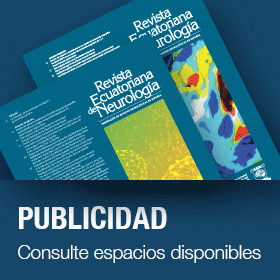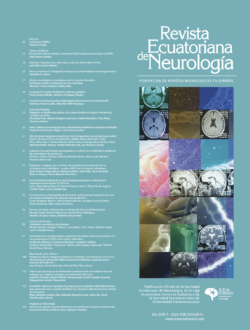Artículo original
Oclusión Endovascular de Arteria Carótida Interna Aberrante Como Causa de Tinnitus Pulsátil. Endovascular Occlusion Of Aberrant Internal Carotid Artery Causing Tinnitus.
Autor: Oliverio Vargas, Daniel Mantilla-García, Melquisedec Galvis, Carlos Ferreira-Prada, Ligia Mateus, Diego Muñoz-SuárezRev. Ecuat. Neurol. VOL 27 Nº 2, 2018
Presentamos el caso de un paciente de 43 años con historia de tinnitus crónico intratable y pulsátil debido al curso aberrante de la arteria carótida interna derecha. En los estudios complementarios, la arteriografía mostró un polígono arterial de Willis preservado y un test de oclusión permeable sin síntomas neurológicos a la oclusión de la arteria carótida derecha. Se realizó oclusión endovascular de la arteria carótida interna derecha en las porciones petrosa y lacerum, con alivio inmediato de los síntomas.
We present a case of a 43-years old male patient with a history of chronic and intractable pulsatile tinnitus due to an aberrant course of the right internal carotid artery. In complementary studies, the angiography showed a preserved Willis’ arterial polygon and a balloon-occlusion test with adequate patency and no neurological symptoms. We performed the endovascular occlusion of the right internal carotid artery in the petrous and lacerum portions with the relief of symptoms.






